Vietnam: A country in Southeast Asia known for breathtaking landscapes, lush green rice fields, Buddhist temples, spectacular national parks and bustling cities. Every year numerous tourists and backpackers are drawn to this spectacular country, which is home to the best coffee in the world.
You also want to explore Vietnam, but don’t know how to get there? When is the best time to visit the country? How you get to all these beautiful destinations? Or what you can experience in the country? Then I would like to help you to plan your adventure in Vietnam in detail with this ultimate Travel Guide.
Which visa do you need
If you travel to Vietnam as a tourist or backpacker, you have to get a tourist visa. Before you travel to Vietnam you need to know for how many days you want to stay in Vietnam. If you want to stay in Vietnam for less than 30 days, you can apply for the free visa on arrival. This Visa entitles you to stay in the country for 30 days from the day of entry (just a few countrys are allowed to get this visa). If you want to stay longer than 30 days in Vietnam, you have to apply for the e-visa, which is valid for 60 days.
When you apply for the e-visa, you need to know exactly what day you want to enter and where you want to enter.
Example: If you want to enter Vietnam on August 1st, you state this date when applying for the visa. Regardless of whether you really arrive in Vietnam on August 1st or three days later, the visa is valid from August 1st (the day for which you applied for the visa) and not from the day of entry. From August 1st your visa will run for 60 days, even if you enter the country on August 4th. In addition, it is not possible to enter the country before August 1st.
Since the visa requirements in Vietnam are so strictly regulated and it takes at least three working days for the visa to be approved, I recommend applying for the 60-day visa for Vietnam at least seven days before entry. The 60-day tourist visa costs a total of $25 USD and cannot be extended. The free tourist visa cannot be extended either.
How to get there
The easiest way to get to Vietnam is by plane. Vietnam has five international airports across the country. However, if you are planning a tour through Vietnam, it is easiest to enter Hanoi or Ho Chi Minh City. Then you can either travel from the south up to the north or from the north down to the south. If you are traveling through Southeast Asia and are coming from Cambodia or Laos, you can easily enter Vietnam by bus. There are daily buses from Cambodia or Laos to Ho Chi Minh City or Hanoi. Crossing the border into Vietnam is uncomplicated in most cases.
How long will you need
Vietnam is a big country that has a lot to offer. If you want to travel all the way from the north to the south (or the other way around), I would recommend to stay 28 – 30 days (that’s how long your visa is). But even then you will still have the feeling you are rushing through the country, since there is a lot to experience.
If you don’t have four weeks to travel the country, I would still recommend at least 14 days in Vietnam. Since the most beautiful places in Vietnam are in the north of the country, I recommend that you only visit the north on a short trip to Vietnam. So you have already seen the most beautiful parts of the country in a short time.
Best time to visit
The best time to travel Vietnam is between November and April. There is little to no rain falls during these months. Temperatures are also warm. The rainy season in Vietnam runs from May to October. During these months heavy rains can occur several times a day.
However, it is not a problem to visit Vietnam during the rainy season. Because the rainy season does not mean that it only rains for six months in a row. It can happen that it rains three days in a row. In most cases, however, it does not rain at all or only rains for a few hours a day.
The rainy season also has a great advantage for travelers. Since there are not as many tourists to Vietnam during this time, accommodation, tours and similar activities are usually cheaper. In addition, you don’t have to expect fully booked buses or hostels, so you don’t have to plan and book anything too far in advance.
How to get around
The best way to get from one place to the next place in Vietnam is by bus. Since you often have to travel long distances in Vietnam, you will often use the sleeper bus. These busses go overnight. While taking a sleeper bus you safe money for one night at a hostel and you cover a lot of distance while you can sleep. You can either take a regular sleeperbus or a VIP sleeperbus. The VIP busses are a bit more expensive but you have more privacy and the busses are a bit more comfortable.
Busses can get booked at almost every accomodation or Hostel or on 12go.asia, a website that allows you to plan your trip quickly and easily. 12go.asia is not only good for your trip in Vietnam, but also for many other countries in South east Asia.
When you arrive at a destination, the easiest and cheapest way to explore it is by scooter. In most cases you can rent a scooter for around 100K Dong per day.
Traffic in Vietnam is very chaotic. If you are not a comfortable driver, I wouldn’t recommend driving in the bigger citys like Hanoi, Hoi An, Da Nang or Ho Chi Minh City. If you don’t dare to drive a scooter at all, you can use the Grab app to call a taxi at reasonable prices in all larger towns and cities. In the smaller citys you will also find a lot of taxis that will drive you around.
And if you don’t want to worry about the best way to explore the country, you can also book a guided tour. I recommend the agency INTRO Travel which together with knowledgeable Group Leaders offers 9 to 15 day tours around the country.
What is the local currency?
In Vietnam you pay with the local currency Dong. 100,000 Dong is approximately 3.80€. You can get the Vietnamese Dong at every ATM. When traveling through Vietnam, you should always have enough cash with you, as card payments are often not accepted.
What is the national language?
The national language of Vietnam is vietnamese. Most people in Vietnam do not speak english, so it’s really hard for travelers to communicate with taxi drivers or bus drivers in Vietnam.
To make it easier to communicate with the locals, here are a few helpful words and phrases:
Hello: Xin chào – Sin Chow
Goodbye: Tạm biệt – Tam Be.et
Please: Làm ơn – Lam En
Thank you: Cảm ơn – Gam En
Yes: Đúng – Vung
No: Không – Com
Please bring the bill: Làm ơn đếm tiền – Lam en dun te.en
1, 2, 3, Cheers!: một, hai, ba, vô! – Mot, Hi, Ba, Yo!
Safety Tipps:
- Never drink water from the tap. Always buy fresh water.
- Always wear sunscreen, even when it’s cloudy.
- Always spray yourself with mosquito spray to avoid diseases like malaria or dengue fever.
- Be careful where you eat and what you eat as there is a risk of food poisoning in Asia if food is not prepared properly.
- Never leave your valuables unattended.
- Always cover your knees and shoulders when visiting a temple.
- Take care and pay attention when crossing the streets.
Top Things to do in Vietnam
The activities listed here are listed in an order I recommend for a possible itinerary through Vietnam. Starting point is Hanoi. If you start your travels in Ho Chi Minh City, just read the list from the bottom to the top! 😉
Watch the train passing at the Train Street in Hanoi
The Train Street in Hanoi is one of the most famous places in Hanoi and is therefore visited by numerous tourists every day. There are many small cafés lined up right next to the railway tracks. As a visitor to Train Street, you have to buy something in one of these cafes. You won’t be let through to Train Street without a seat at a coffee shop.
The train that runs through Train Street from time to time is particularly spectacular. This then drives very close to the cafés and the feet of the tourists. If you have the opportunity, visit Train Street on weekends, when the train passes through Train Street more frequently and the wait for the train is shorter.
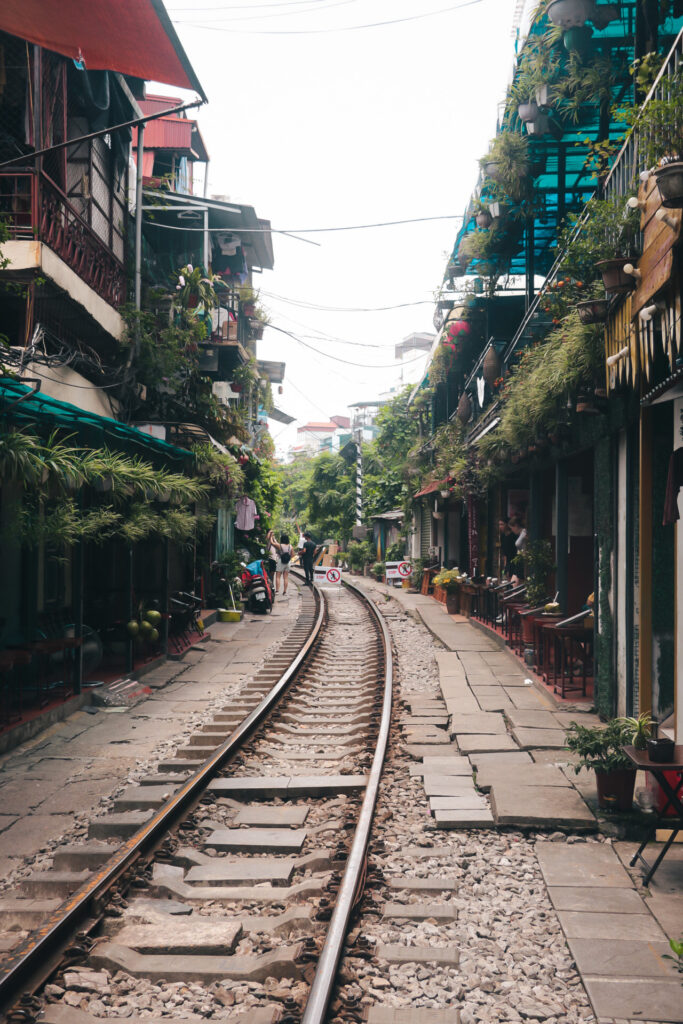
Leave a note in the Note Coffee
The Note Coffee is a small coffee shop right in the city center of Hanoi. Travelers from all over the world come here not only to drink the delicious Vietnamese coffee, but also to leave a message on a Post It. The café is covered from floor to ceiling with colorful notes on which travelers have left funny, sweet or thoughtful messages.
Anyone traveling to Hanoi should also leave a message at The Note Coffee. Also, the coconut coffee at this coffee shop is one of the best in Vietnam.

Watch a Waterpuppet Show
An absoulute must do in Vietnam is to watch a water puppet show. The brightly coloured puppets recreate daily life in Vietnam’s northern villages, including duck herding, fishing, rice planting, boat rowing and royal parades.
The most famous place to see a water puppet show is Hanoi. Alternatively, you can also watch such a show in Ho Chi Minh City. Tickets for a water puppet show cost around 300K Vietnamese dong. A water puppet show usually lasts 45 minutes.
Sail along Ha Long Bay
The Ha Long Bay Nationalpark is famous for its stunning limestone mountains raising up from emerald waters that formed from thousand years ago. Each day travelers visit the Ha Long Nationalpark on a boat trip. There are day tours that start in Cat Ba in the morning and end there in the evening. Alternatively, you can also book a two or three day tour through Ha Long Bay National Park. The sunset, which you can watch over the water and the rock transformations, is particularly spectacular. At night you sleep on a boat in your own cabin.

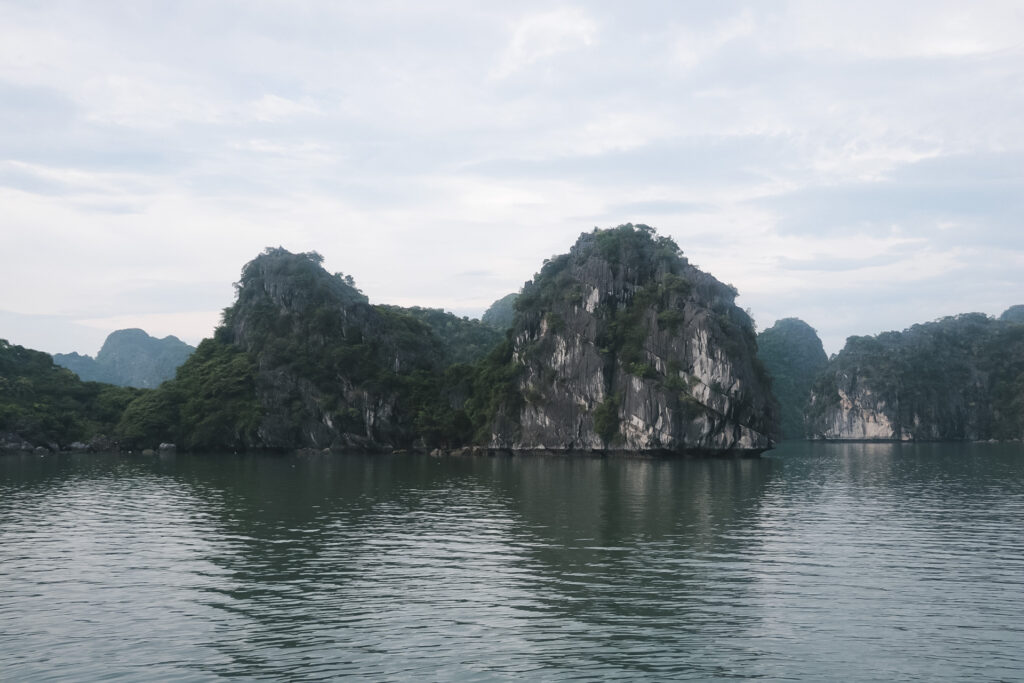
Go hiking in Cat Ba Nationalpark
Cat Ba National Park is located on Cat Ba Island, which is close to Ha Long Bay National Park. If you still have a little time after visiting the Ha Long Bay National Park, you should definitely visit the Cat Ba National Park. The national park is not large and can therefore be explored in a day. Cat Ba National Park includes a lot of steep hikes. However, the difficult climb is worth it for the breathtaking view of the island. Just remember to wear sturdy shoes and take enough water with you.
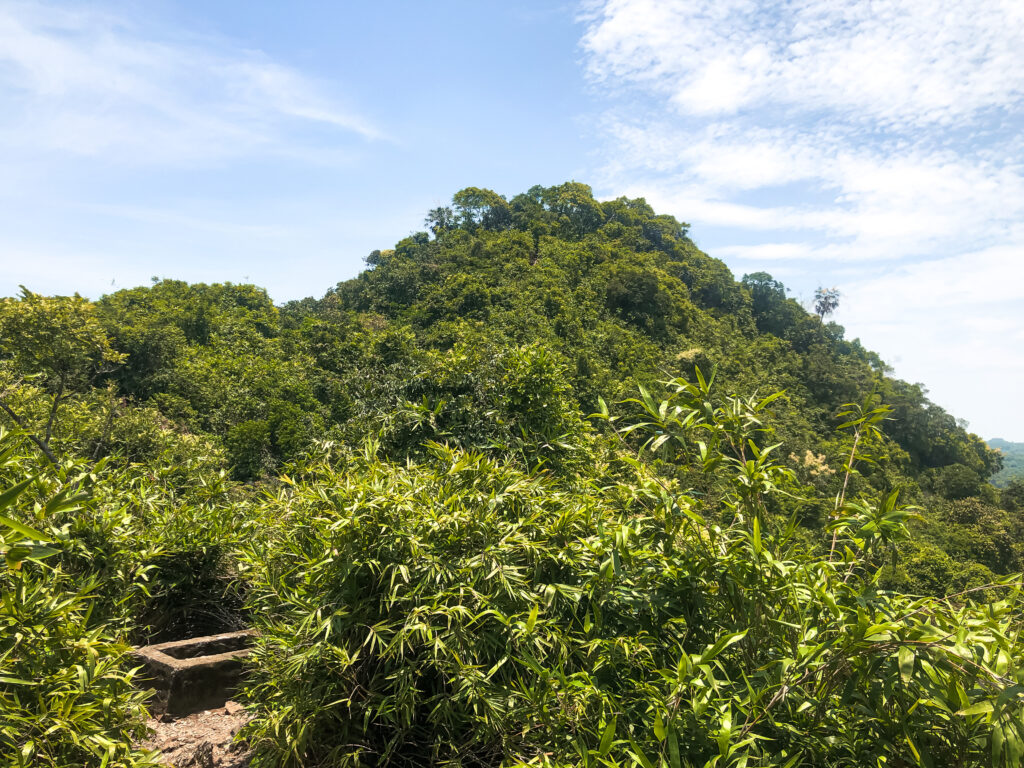
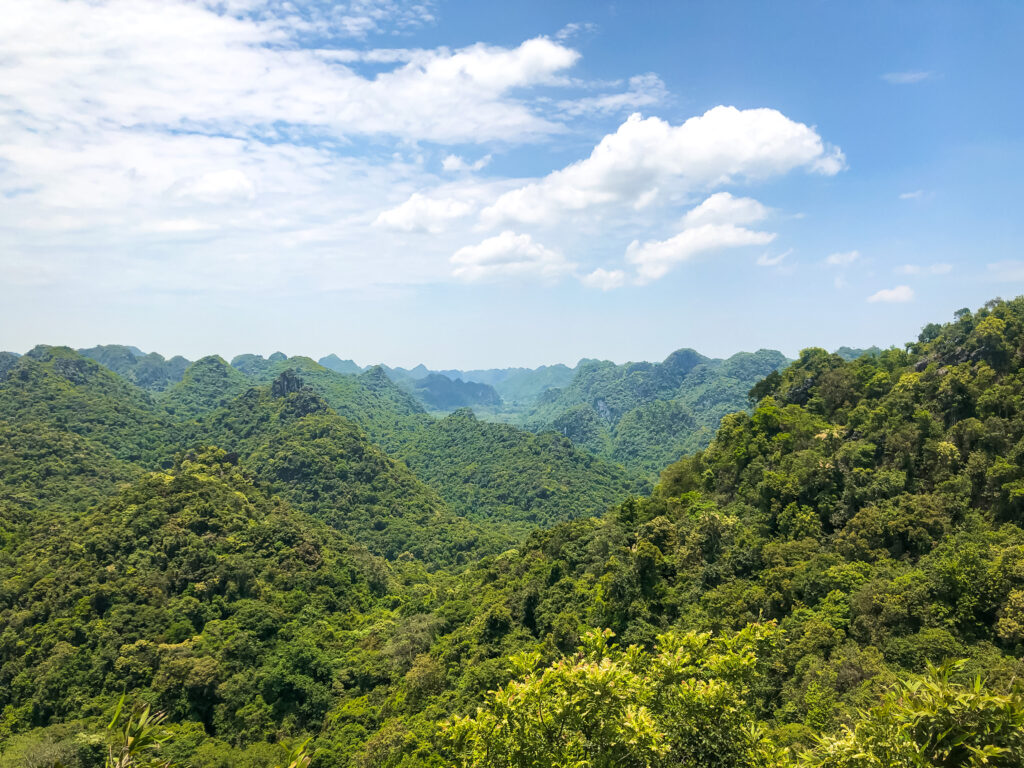
Go on a rice field trekking tour in Sa Pa
Sa Pa is known for its green rice fields. The alpine-like nature in particular gives Sa Pa its special charm, which attracts numerous travelers every year. A guided trekking tour through the rice fields is particularly popular for tourists traveling to Sa Pa.
You have the opportunity to take part in a day tour including lunch and a visit in a local village. Or you book an overnight trekking tour, where you also spend one night in a homestay in the middle of the rice fields of Sa Pa.
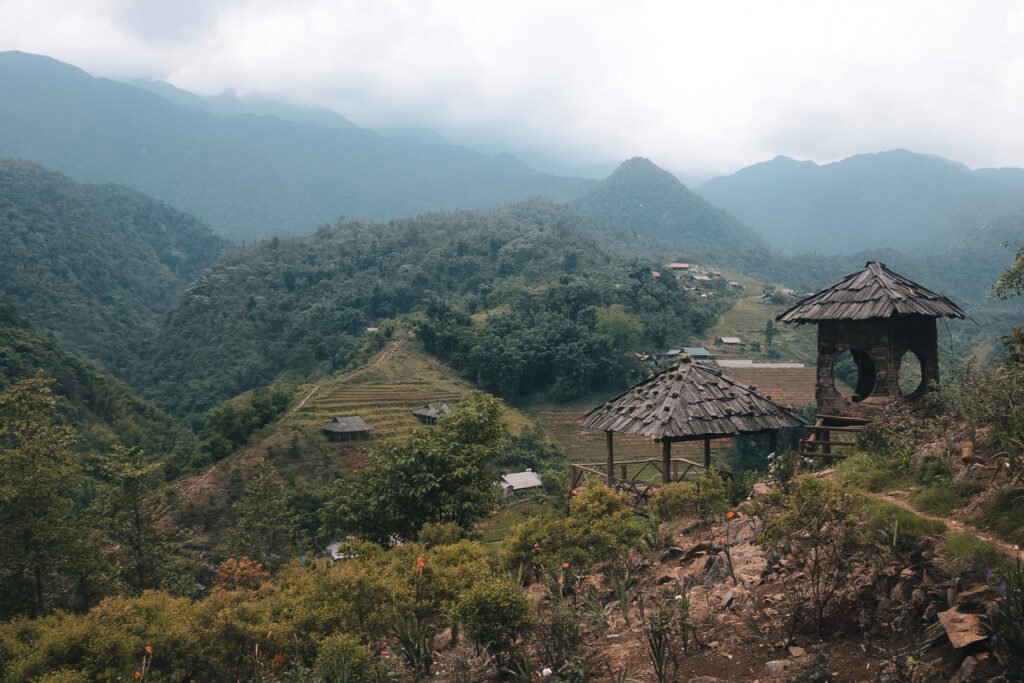
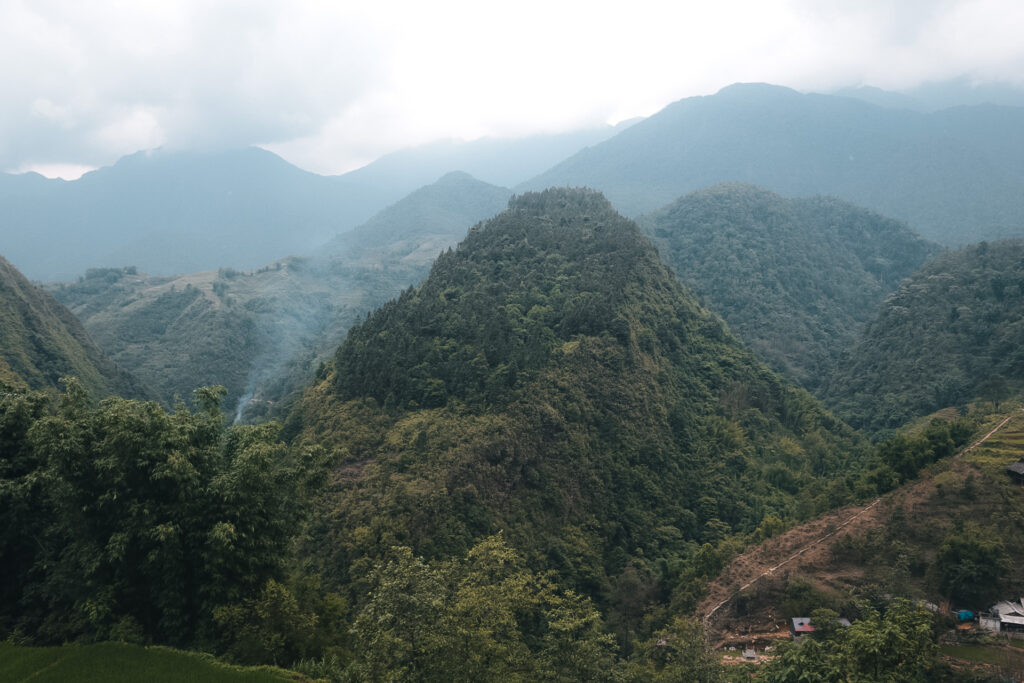
Explore the Cat Cat Village in Sa Pa
Cat Cat Village is one of the must visit places when traveling to Sa Pa in the north of Vietnam. The village is an ethnic village of the Hmong people. Cat Cat village was formed in the middle of the 19th century, and it still preserves important traditional crafts. Cat Cat Village is located 2 kilometers from Sapa city center and can be reached either by taxi, scooter or on foot.
The Village has a lot to offer, which is why it is worth spending a few hours here. In addition to a waterfall, you can also visit the numerous local shops and above all enjoy the view over the spectacular rice fields. Entry to Cat Cat Village costs 150K Dong.
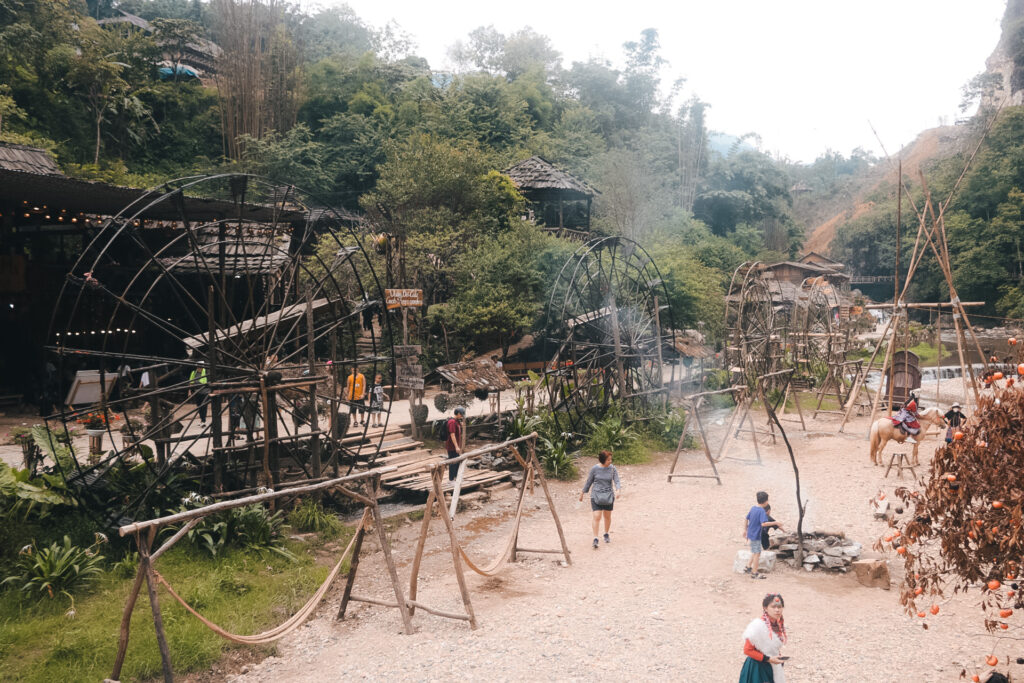
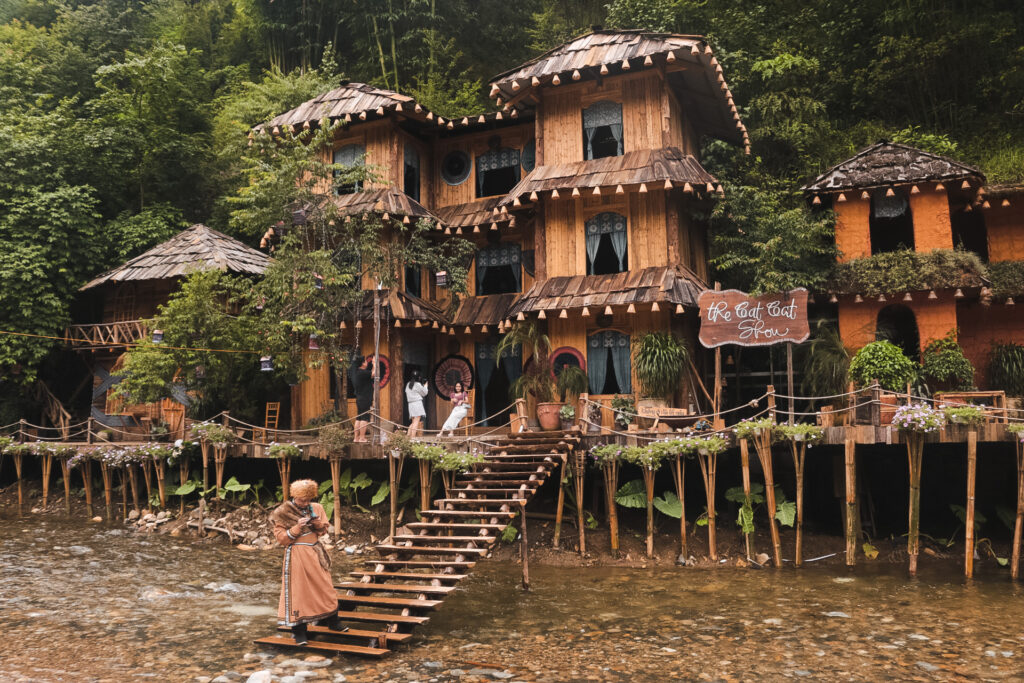
Drive the Ha Giang Loop
For many travelers, the Ha Giang Loop is the absolute highlight in Vietnam. The Ha Giang Loop is about 350 kilometers long and has breathtaking nature to offer. But the absolute highlight of the Ha Giang Loop is not only the spectacular view, but above all the road trip with the motorbike.
There are various travel organizations that offer multi-day tours along the Ha Giang Loop. The organization Jasmine Tours is particularly popular with backpackers. With Jasmine Tours you also have the option to drive a motorbike yourself or, for an extra charge, to drive with an Easyrider. The advantage of an Easyrider is that you don’t have to concentrate on the dangerous road yourself and can therefore take many more pictures. However, driving the Ha Giang Loop independently is a unique experience.
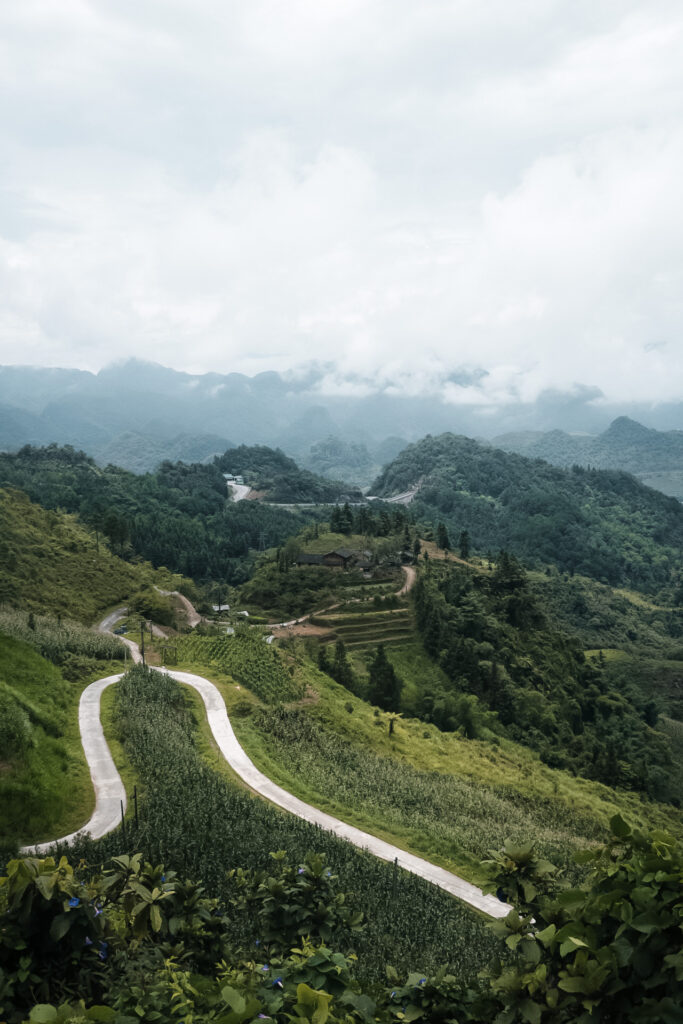
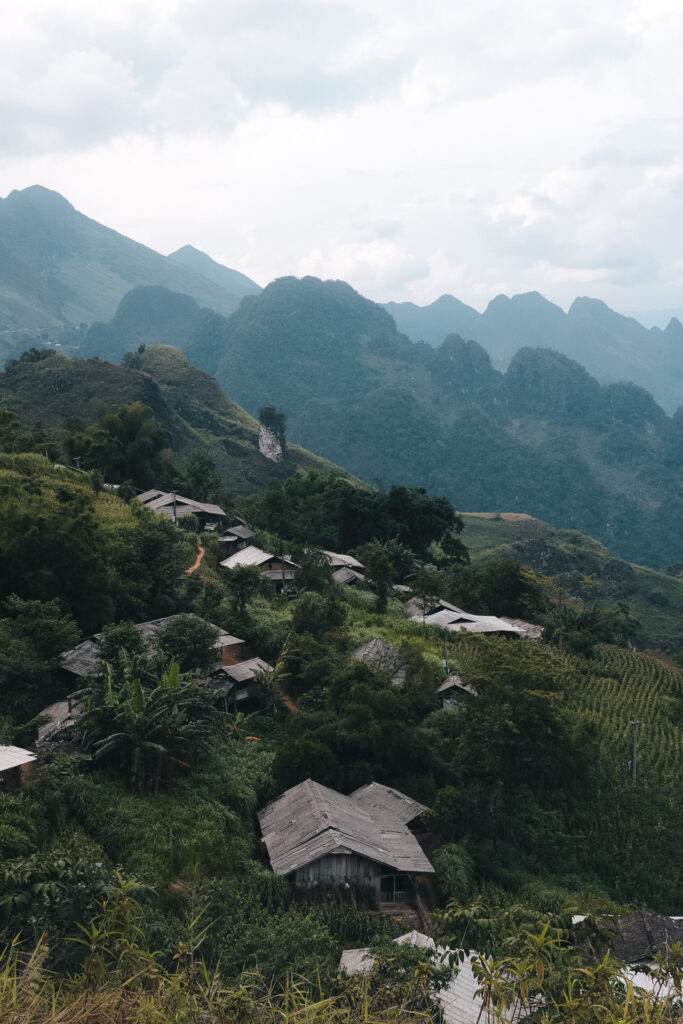
Get impressed by the Ban Gioc Waterfall
The spectacular Ban Gioc Waterfall is the largest waterfall in Vietnam. It is about 90 kilometers away from the city of Cao Bang, directly on the Chinese border. The border goes right through the middle oft he waterfall, which is why it belongs to Vietnam and China. In China the waterfall is called Detian Transnational Waterfall. You can visit the waterfall from both countries and also take a boat tour to the waterfall. From Cao Bang, the waterfall is easily accessible by local bus. A ride on the bus costs 85K dong.

Climb up the Mua Caves in Ninh Binh
One of the most famous places in Ninh Binh is the Mua Caves. This is a huge mountain that can be climbed with 500 steps. At the top of the mountain, you can admire not only the kite placed there but also the spectacular view of the nature of Ninh Binh.
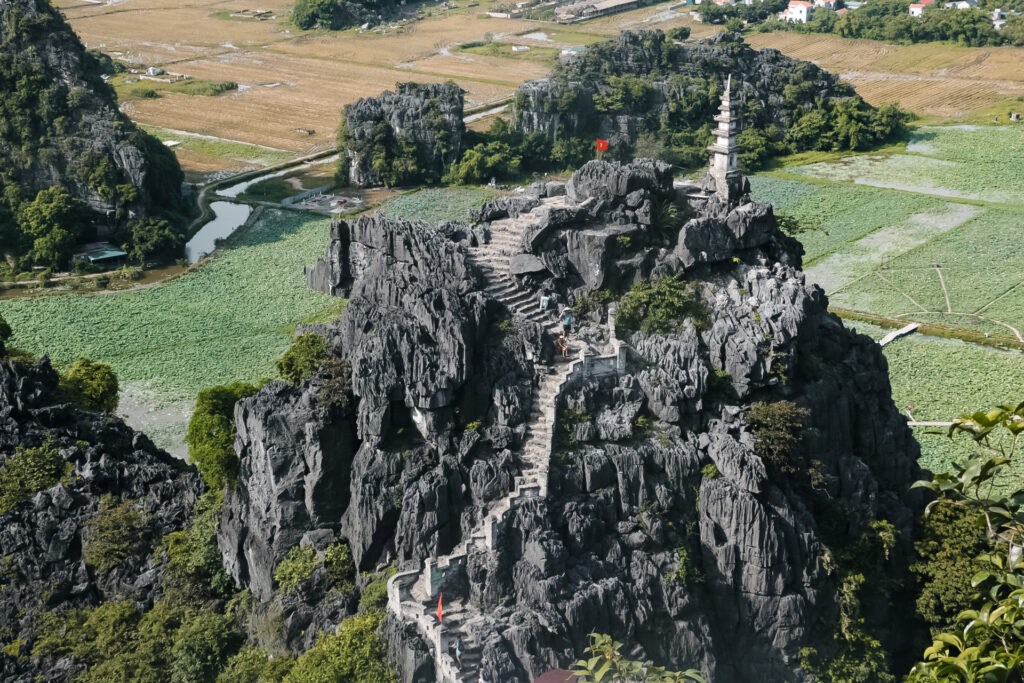
Explore the Thai Vi Temple in Ninh Binh
The Thai Vi Temple is a small unknown temple in Ninh Binh. Not many tourists are drawn to the remote fields of Ninh Binh, home to the Thai Vi Temple. The temple is not big, so it can be visited very quickly. The Entry is free.
Thai Vi Temple was built by King Tran Thai Tong in 1258 after his first victory against the Chinese invasion. Every year in March, there is a festival in the Thai Vi Temple. During this festival there are several ceremonies in honor of the King Tran Thai Tong.
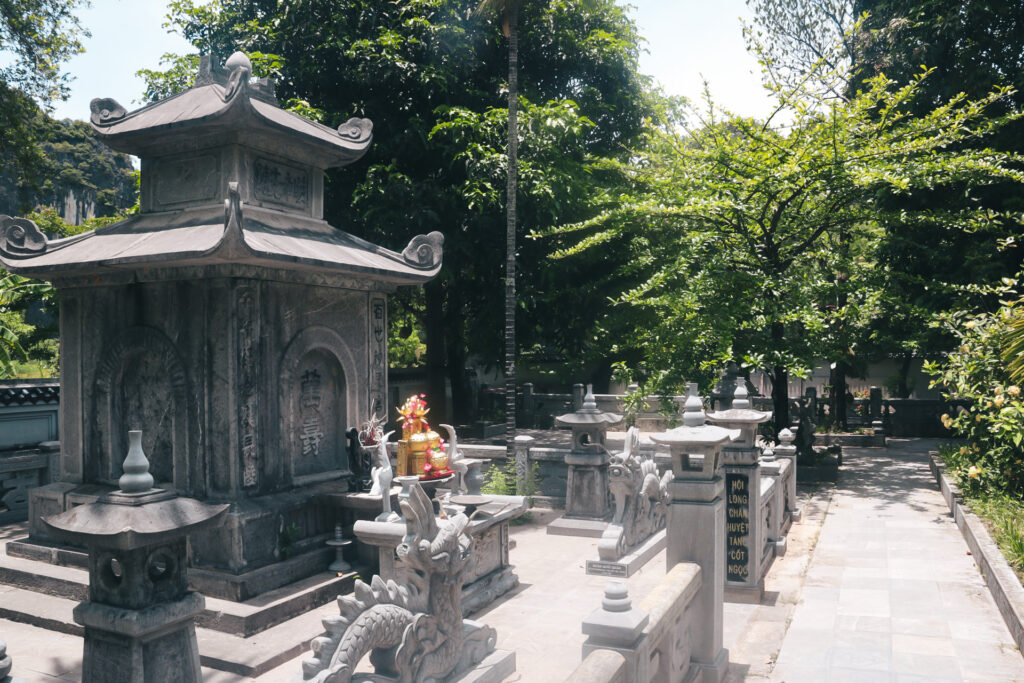
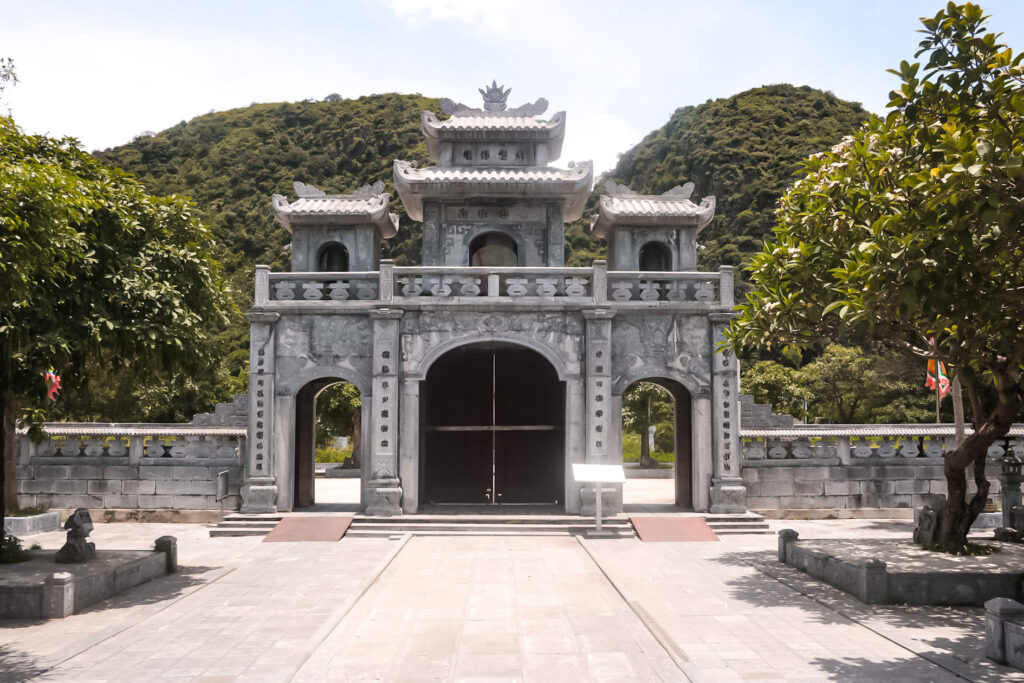
Get impressed by the Bich Dong Pagoda
The Bich Dong Pagoda, on the other hand, is a little better known than the Thai Vi Temple. This spectacular temple, visited by numerous tourists every day, is an ancient, multi-tiered pagoda in a mountainside with 3 natural caves. The temple can be reached via a footbridge that leads over the water. The temple is particularly known for the impressively large entrance gate.
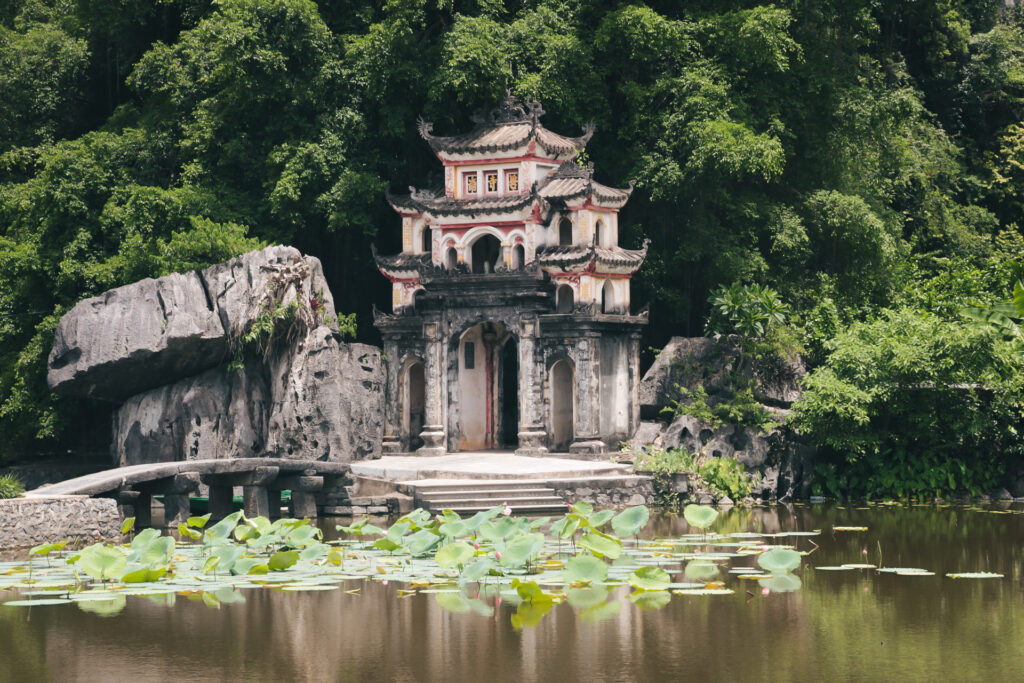
Visit the spectaculare Caves in Phong Nha
Phong Nha is known for its many interesting caves. From regular caves that you can walk through to caves that you can take a boat through or even stay the night, you can find every type of cave in Phong Nha. There are many caves to visit in Vietnam, but to see the truly breathtaking caves I would recommend you to only visit the caves in Phong Nha. There, a visit to a cave is always associated with a little adventure.
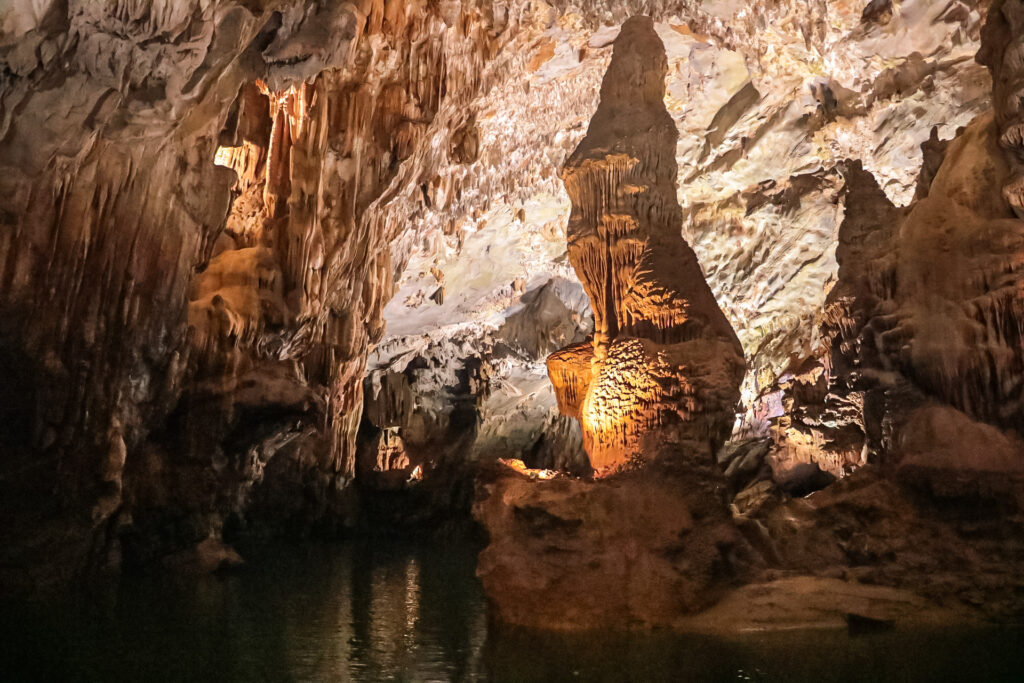
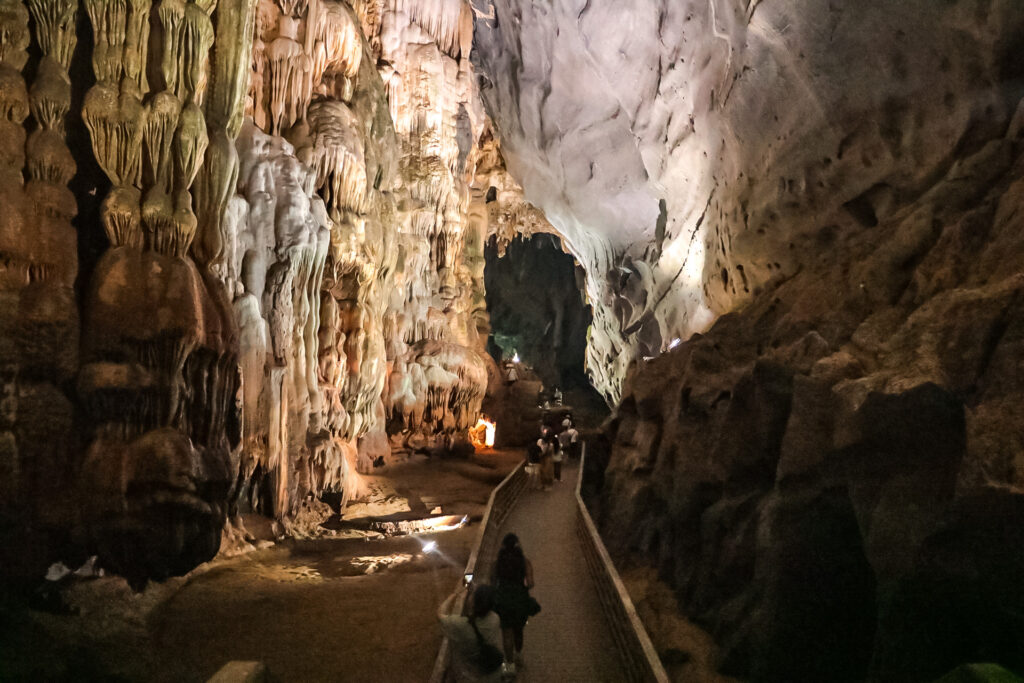
Visit the Duck Stop in Phong Nha
The Duck Stop is a farm in Phong Nha where ducks are kept. The farm is run by the locals. They offer visitors the opportunity to play with the ducks, feed them and then be served a typical traditional Vietnamese meal for just 100K Dong.
Visiting the Duck Stop is a lot of fun. You can try to be a duck leader by standing in a flock of ducks and throw their food to them. You can also get a foot massage from the ducks, where you are suppose to sit on a bench and then the ducks‘ food gets thrown right in front of your feet.

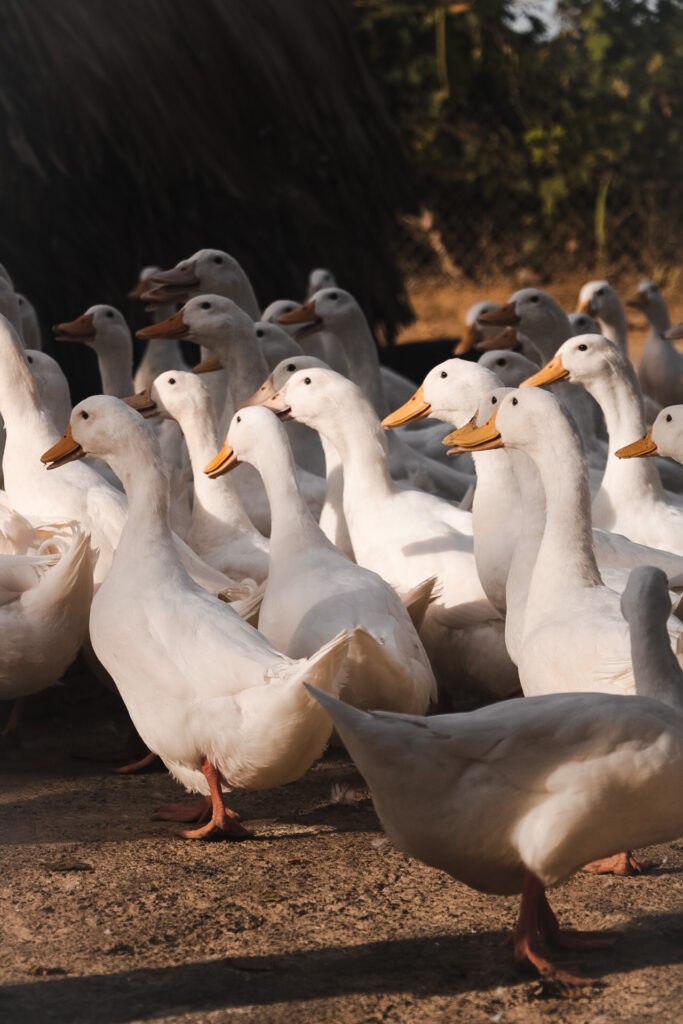
Explore the Abandoned Waterpark in Hue
Ho Thuy Tien waterpark opened ist doors in 2004 having cost $3 million to build. At this time it wasn’t even finished and the business wasn’t proving lucrative. Just two years later the owner closed the waterpark after running out of funds and left it abandoned. Since then the waterpark is a famous tourist attraction. Everyday tourists from all over the world come to Hue to visit the spooky and abandoned place. The Abandoned Waterpark in Hueis definitely a really cool place for photographers who like to shot at abandoned places.
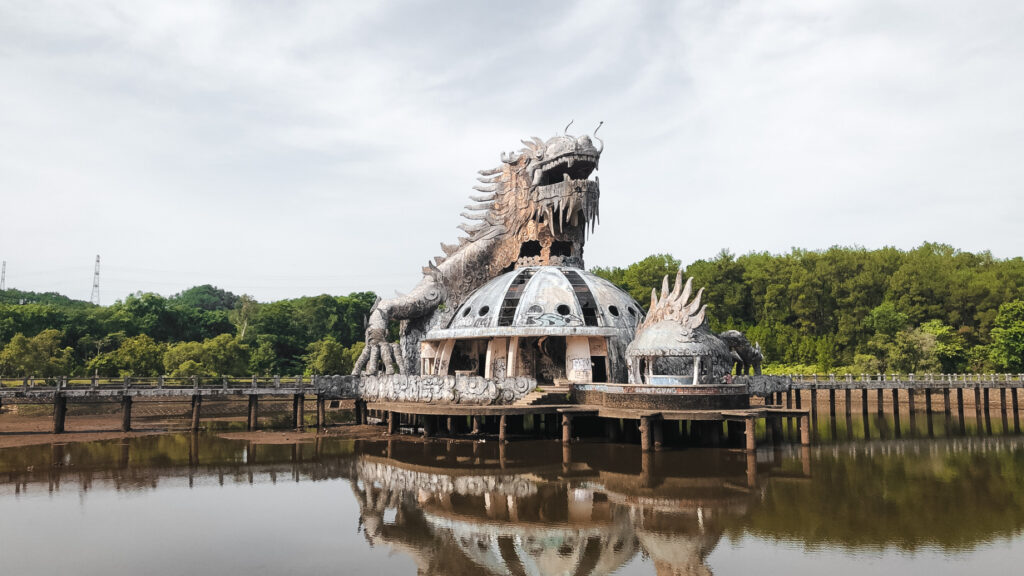
Make a Daytrip along the Hai Van Pass
In addition to the Ha Giang Loop in northern Vietnam, there is also the Hai Van Pass. This pass is a lot shorter than the Ha Giang Loop and can therefore be explored in one day. The Hai Van Pass starts in Hue and ends in Da Nang. During the drive along the Hai Van Pass you have a breathtaking view of nature and the sea.
Similar to the Ha Giang Loop, you can ride the Hai Van Pass with an Easyrider. However, since the route is not that long and dangerous, it is worth driving the Hai Van Pass yourself. You can rent a scooter from your accommodation in Hue and drive along the Hai Van Pass. You don’t need to worry about your luggage, it will be brought to your next accommodation in Da Nang or Hoi An. Of course you can also drive the route from Hoi An/Da Nang to Hue.
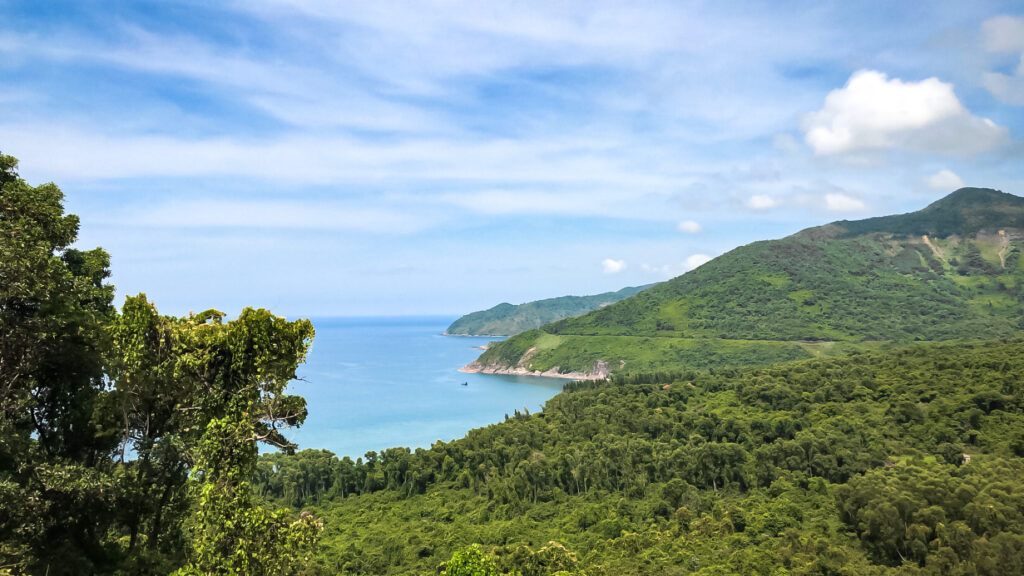
Stroll around the old quarter of Hoi An
Romantic lights, colorful lanterns, delicious coffee, numerous shops, boats on the river and colourful houses. This unique charm can only be found in the old quarter of Hoi An. The French, Japanese and Chinese influence is particularly noticeable between the many alleys of the Old Quarter.
Hoi An has long been a UNESCO World Heritage Site and therefore attracts numerous travelers from all over the world every year. Therefore, Hoi An is also a must see place when you travel to Vietnam.
For more things to do in Hoi An, please read my blog post 10 Top Things to do in Hoi An – The ultimate Guide for Hoi An.
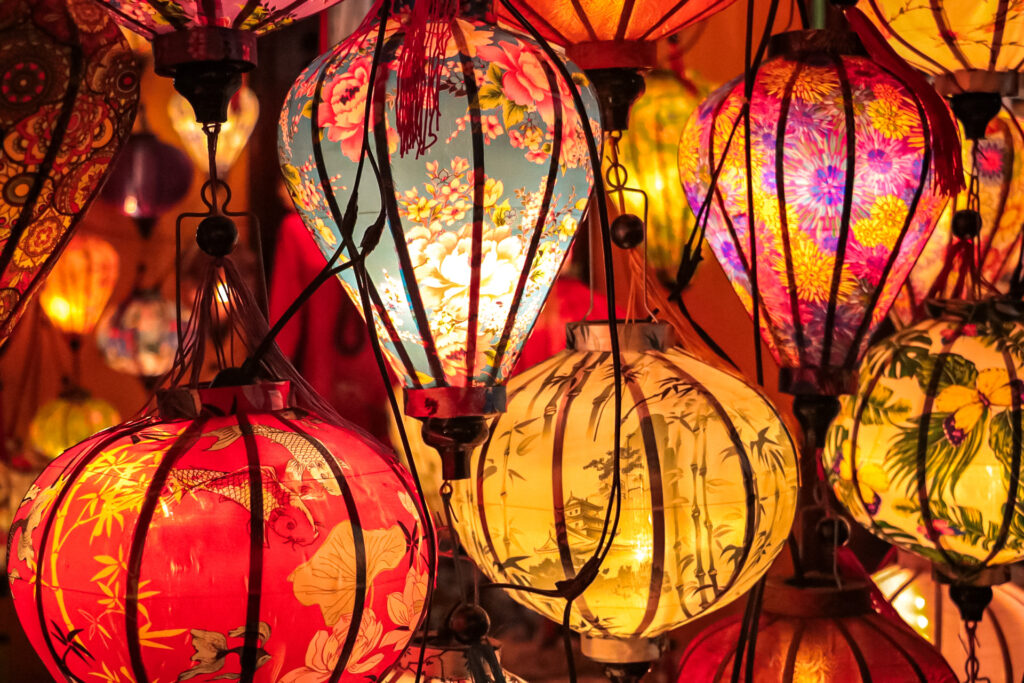
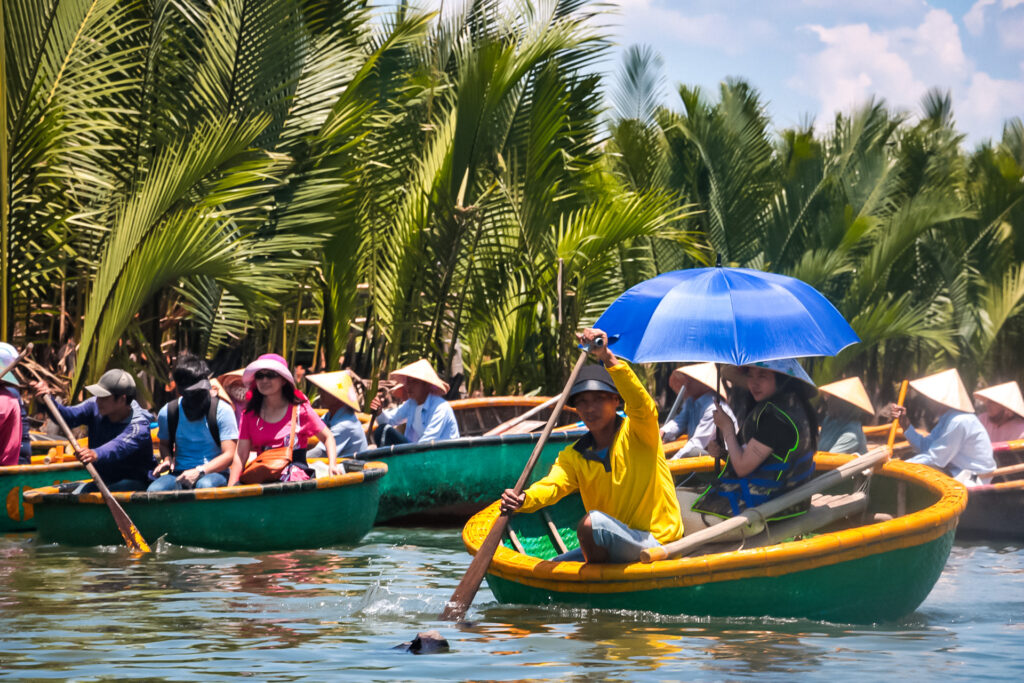
Admire the architectural works at the Clay Tunnels in Da Lat
I usually recommend everyone to skip the south of Vietnam and travel straight to Ho Chi Minh City from Hoi An. However, since the route by bus from Hoi An to Ho Chi Minh City can be very long, it is worth making a small stopover in Da Lat. Da Lat is particularly well-known for the Clay Tunnels. This is an art gallery with several impressive architectural works. The Clay Tunnels were built in 2010. Entry costs 120K dong.
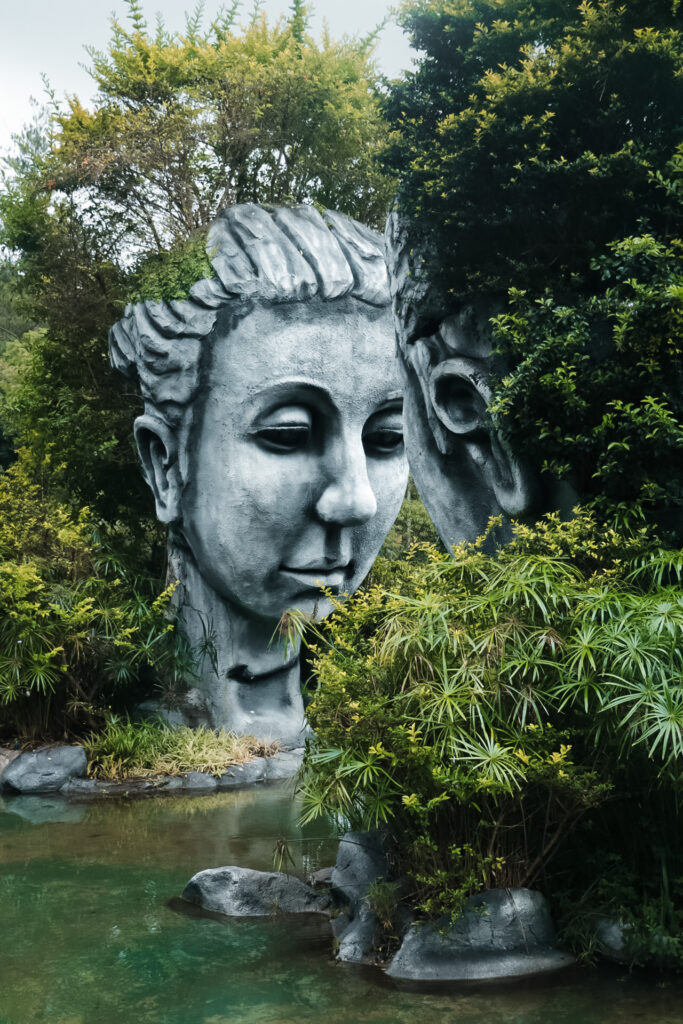
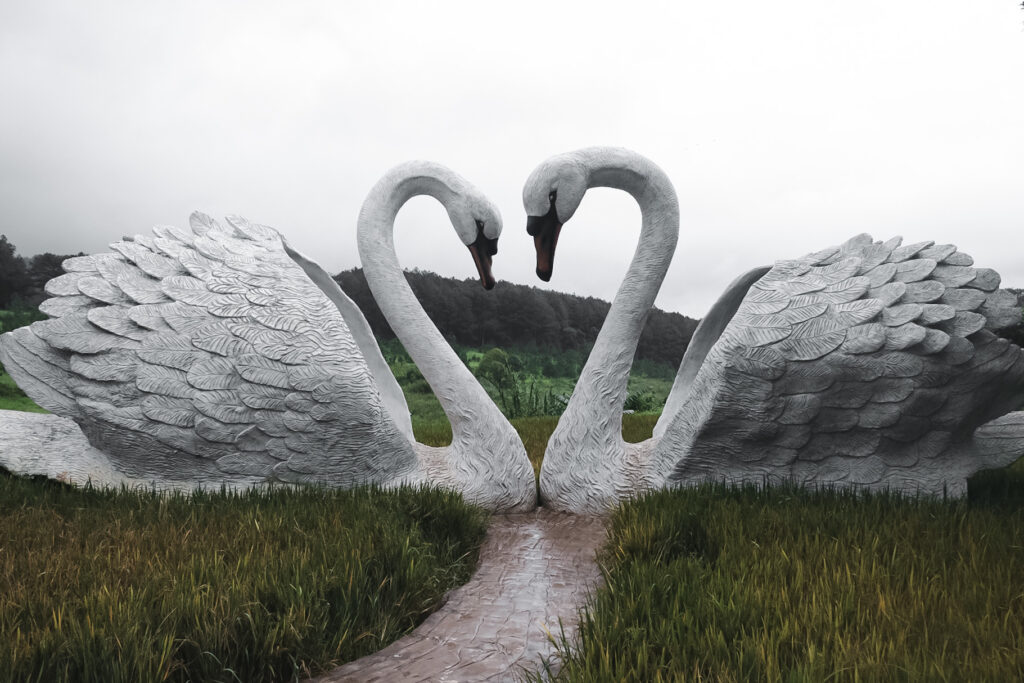
Visit the Tan Dinh Church in Ho Chi Minh City
The Roman Catholic Tan Dinh Church is located in the heart of downtown Ho Chi Minh City. A church with a pink facade. Admid the drab and gray buildings of Ho Chi Minh City, Tan Dinh Church stands out and provides a colorful contrast.
The church is closed on weekends, but during the week it is possible to visit the church grounds. Anyone who explores Ho Chi Minh City should definitely start a visit to the Tan Dinh Church.
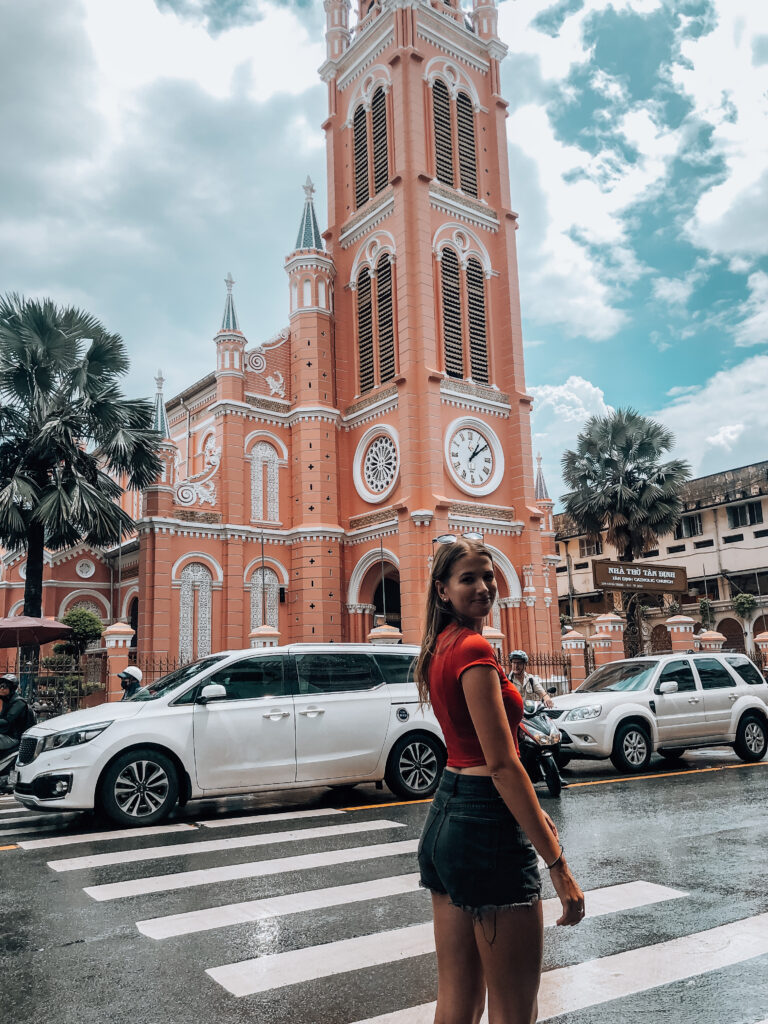
Enjoy a coffee in the Cafe Appartments in Ho Chi Minh City
Vietnam is known for its unique Vietnamese coffee. You should especially try the Coconut Coffee and the Egg Coffee. The perfect place for this is the Café Apartments in Ho Chi Minh City. This is an apartment block filled with various cafes.
Learn more about Vietnams History in the War Remnants Museum
Vietnam has a really dark history, in 1955 A communist regime is in power in northern Vietnam, while a military regime is in power in the south. South Vietnam threatens to be subdued by the North. South Vietnam then receives support from the US, as they fear a domino effect on neighboring countries if South Vietnam were to fall to the communists in the north.
At the beginning of August 1964 the alleged Tonkin Incident occurred, after which the US issued a declaration of war. The war claims a total of over 3 million dead on the Vietnamese side. Another 2 million suffer serious damage to their health from highly toxic chemicals used by Americans.
In January 1973, an armistice agreement is signed and the Americas withdraw their troops from Vietnam. However, the war did not end until 1975 with North Vietnam’s conquest of South Vietnam and the reunification of Vietnam.
Even if the War Remnants Museum in Ho Chi Minh City has a really dark history and holds a lot of sad storys, it’s a good place to find out more about the Vietnam War in the years 1955 – 1975.
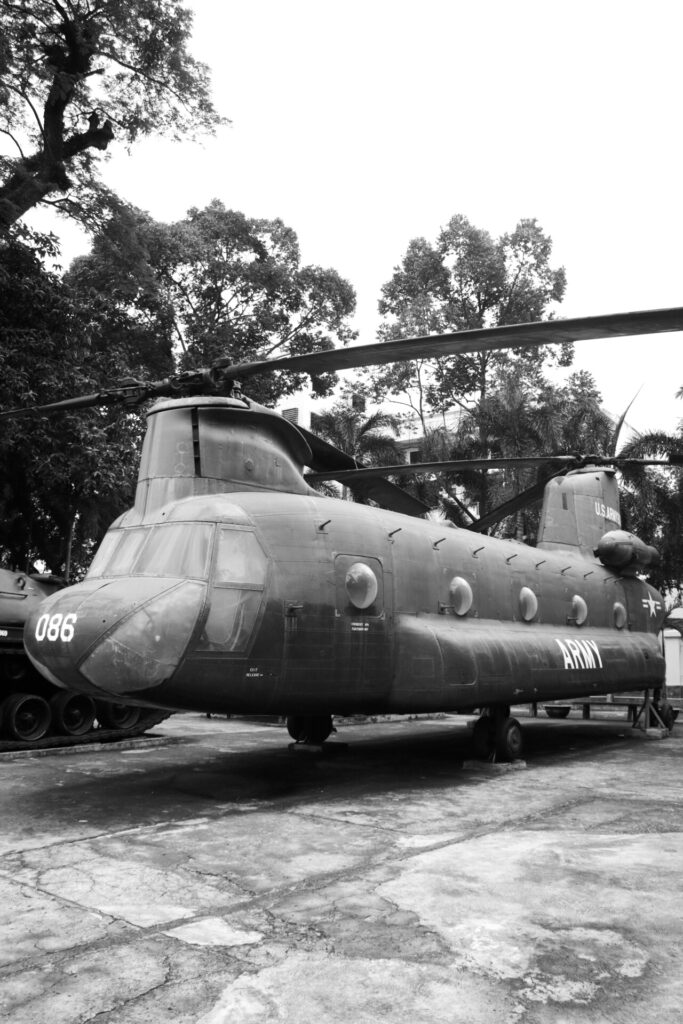

Climb through the Cu Chi Tunnels
In addition to the War Remnants Museum, there are also the Cu Chi Tunnels outside of Ho Chi Minh City. The Cu Chi Tunnels are underground tunnels which were used during the Vietnam war by Viet Cong Soldiers as hiding spots. They were fighting from there against the American Soldiers. The tunnels were also used for living and hospitals. Today, the Cu Chi Tunnels can be visited by tourists who want to learn more about the history of Vietnam. If you have already visited the War Remnants Museum, you should definitely visit the Cu Chi Tunnels.
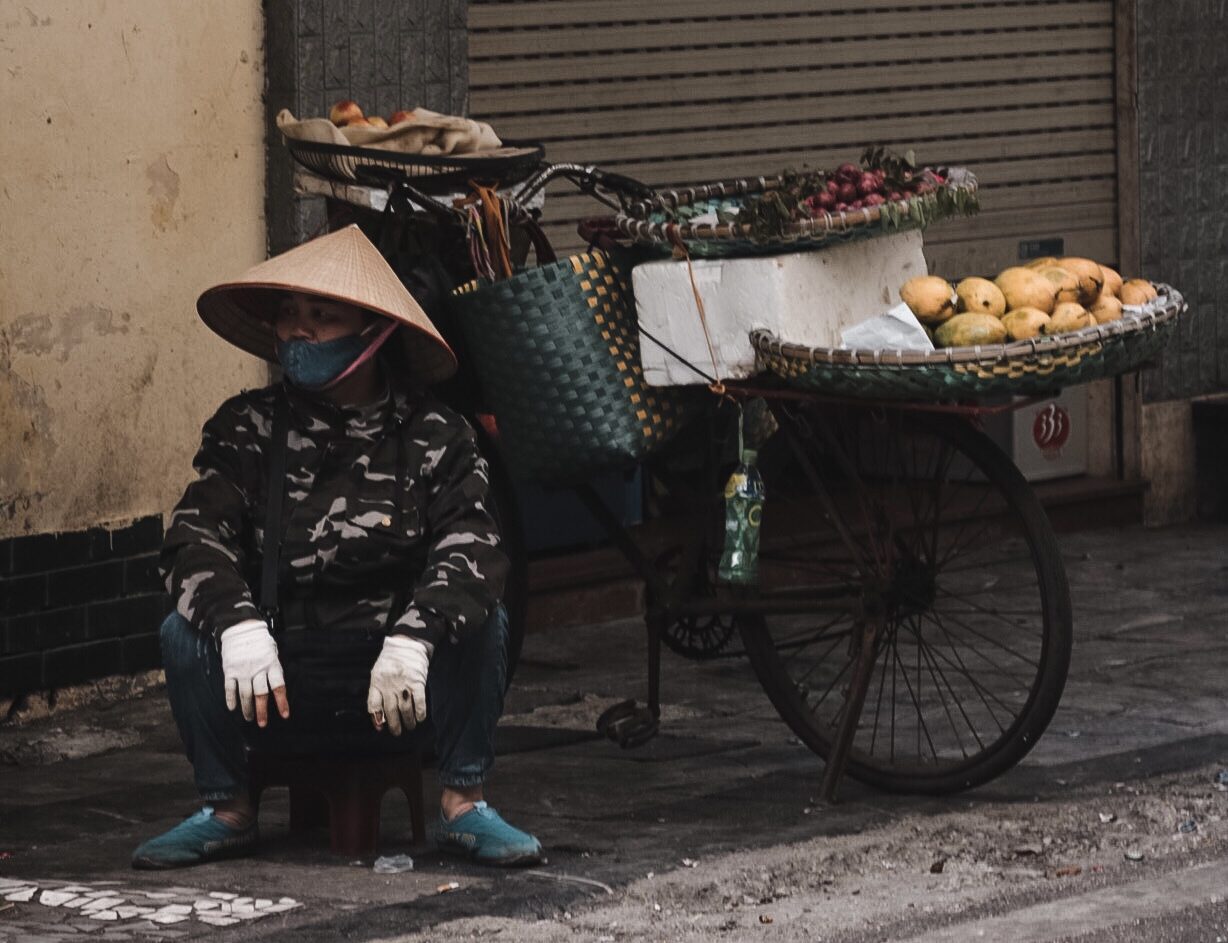
No responses yet